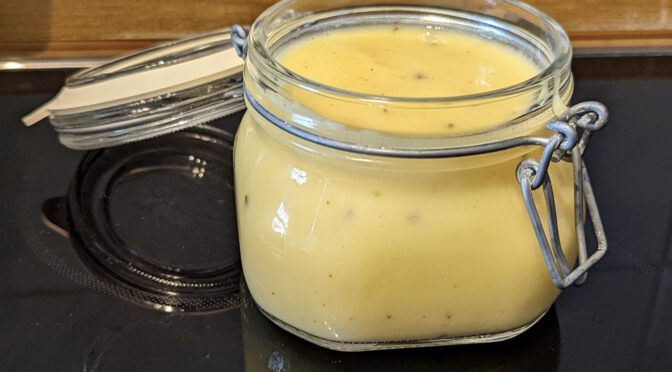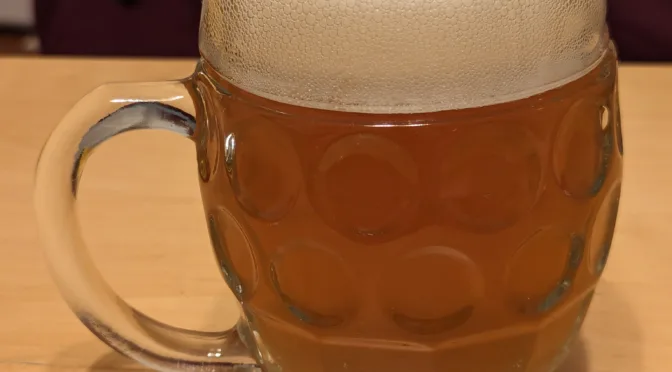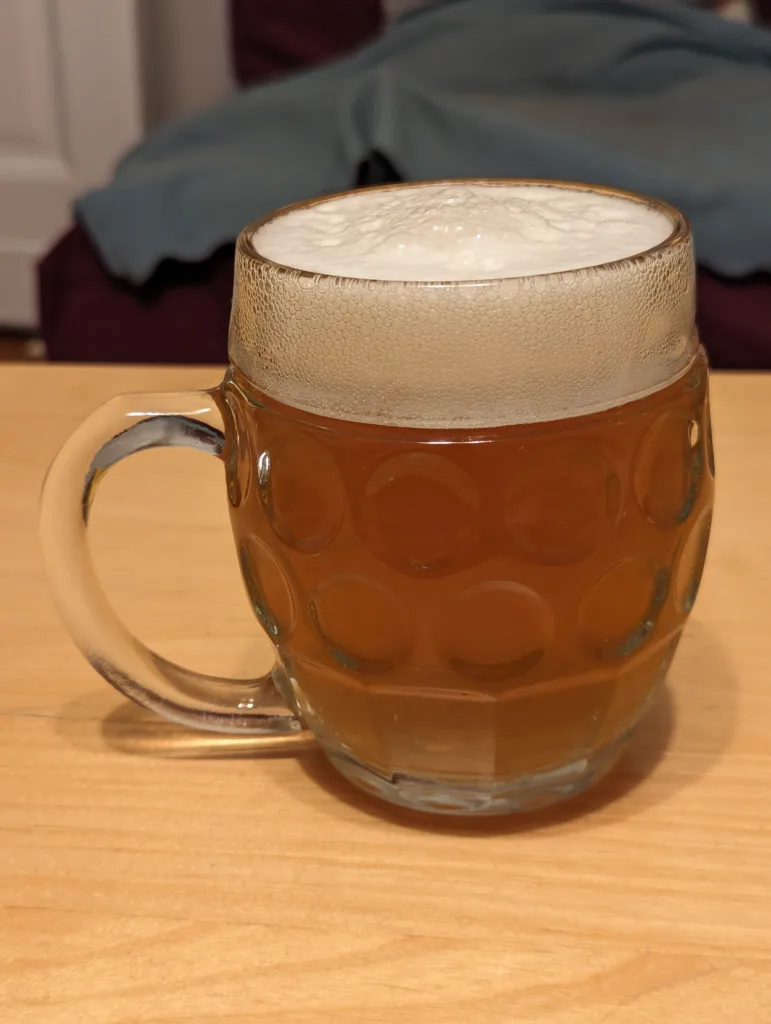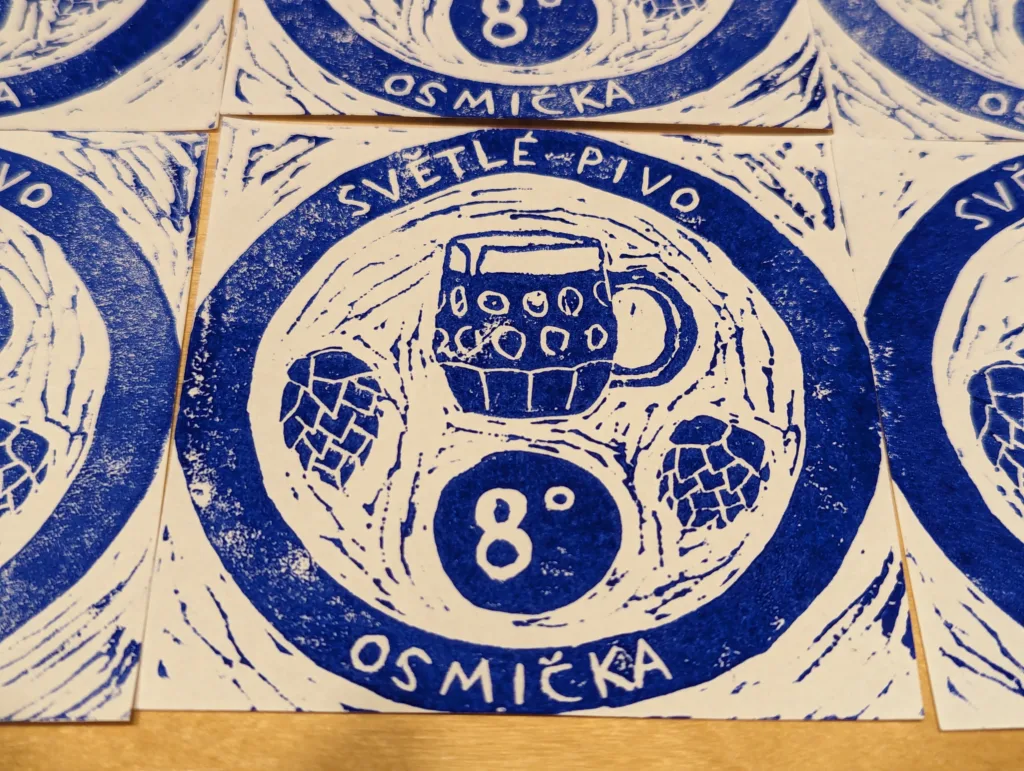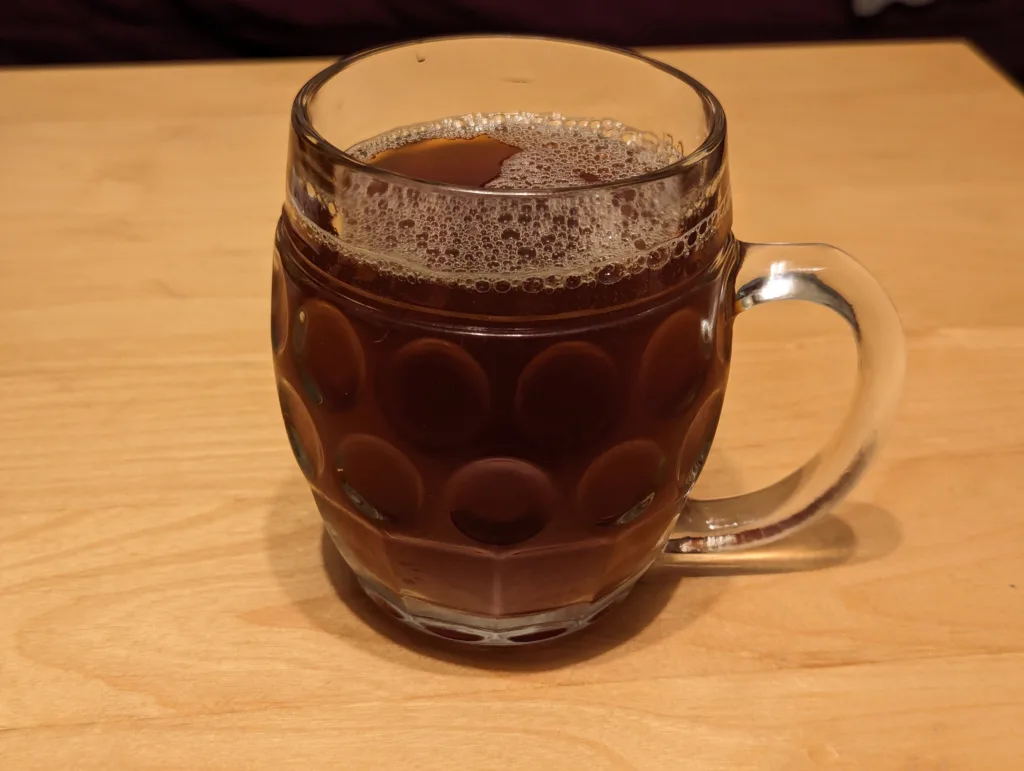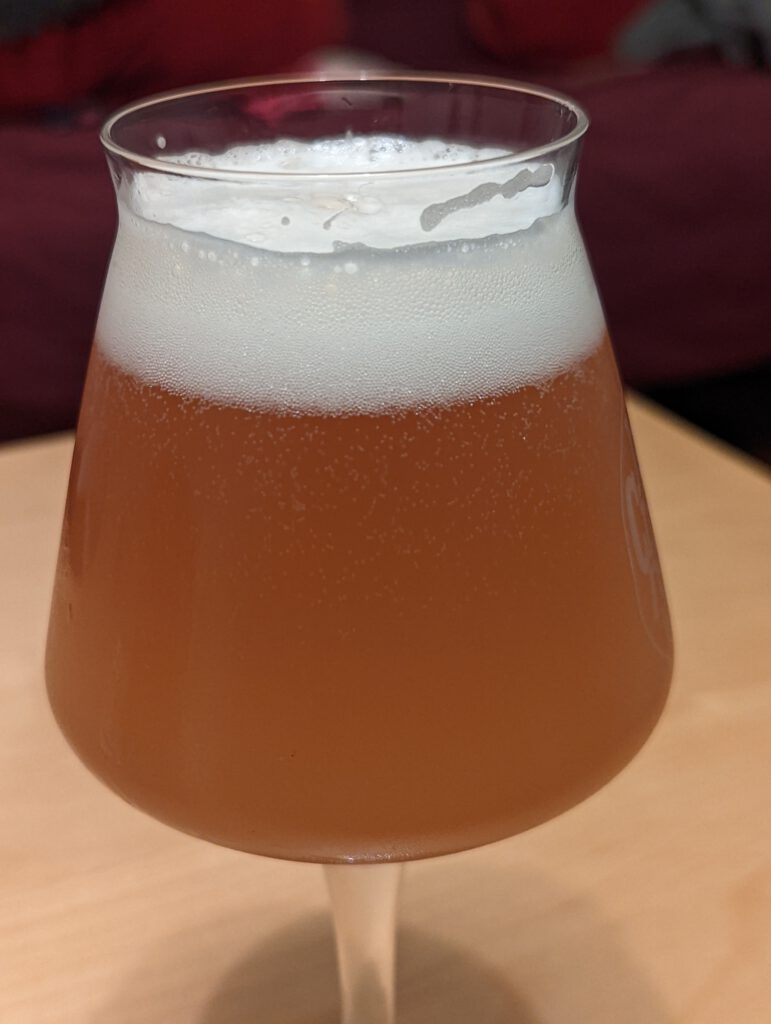If you’ve ever had a few beers in a pub with friends, you’ve most likely come across the problem that these few beers stimulate the appetite, so usually, you’d want to have some sort of snack with them. In the UK, something like crisps, pickled eggs, pork scratchings or even a more substantial dish like a pork pie or a Scotch egg would be typical, but in Lagerland, there exist 3 regional snacks that are distinctly cheesy and also fairly popular, one of them maybe less so, but I think it deserves to be celebrated more than it currently is. In this article, I want to discuss what I consider to be the Holy Trinity of cheesy beer snacks.
Nakládaný hermelín
This Czech pub classic is an absolutely delight: slightly gooey soft cheese, marinated in a neutral oil together with thinly sliced onions and chili peppers and seasoned with garlic, paprika, optionally cayenne pepper, a few peppercorns and a bayleaf or so.
Hermelín is basically a Czech domestic version of camembert, just with a different name. The real joy of nakládaný hermelín is when it’s marinated and aged sufficiently in oil so that it’s soft and gooey but not too runny, with just a bit of aroma, and not too much of an ammonia note that ripe camembert eventually develops into, complemented by garlic and a hint of spice from the paprika powder and of course the sliced onions that were marinated with it.
When I make nakládaný hermelín at home, I don’t really follow a strict recipe, but what I do is this: I buy a few German-produced camemberts (because that’s what I have available, no actual hermelín in my local supermarket), slice up a few onions (sometimes white, sometimes red), and cut the camemberts in half horizontally. I then rub crushed garlic on the cut surface and then sprinkle some paprika powder and cayenne pepper on. I then reassemble the camembert wheel. Taking a jar, I first add a layer of onions on the bottom, then I put the camembert on top. If it doesn’t quite fit the jar, I cut it into quarters and put it in tightly. I then add more sliced onions and repeat the whole process. To finish it off, I add a few peppercorns and a few bayleafs, as well as a pickled chili pepper or two. I then top it up with a neutral oil (my personal preference is rapeseed oil) so that everything is covered, close the jar and put it in the fridge for a week or so to properly marinate the cheese.
This is a cheese best served with dark rye bread. Ideally, the cheese should be soft enough that it can be spread easily on its own. It’s cheesy, gooey and slightly spicy, and absolutely gorgeous with a few glasses of Czech lager.
I occasionally make this for myself, but I’m also in the fortunate situation that a local Prague-Spring-themed pub in Berlin serves their homemade ones, even with hermelín cheese they import themselves.
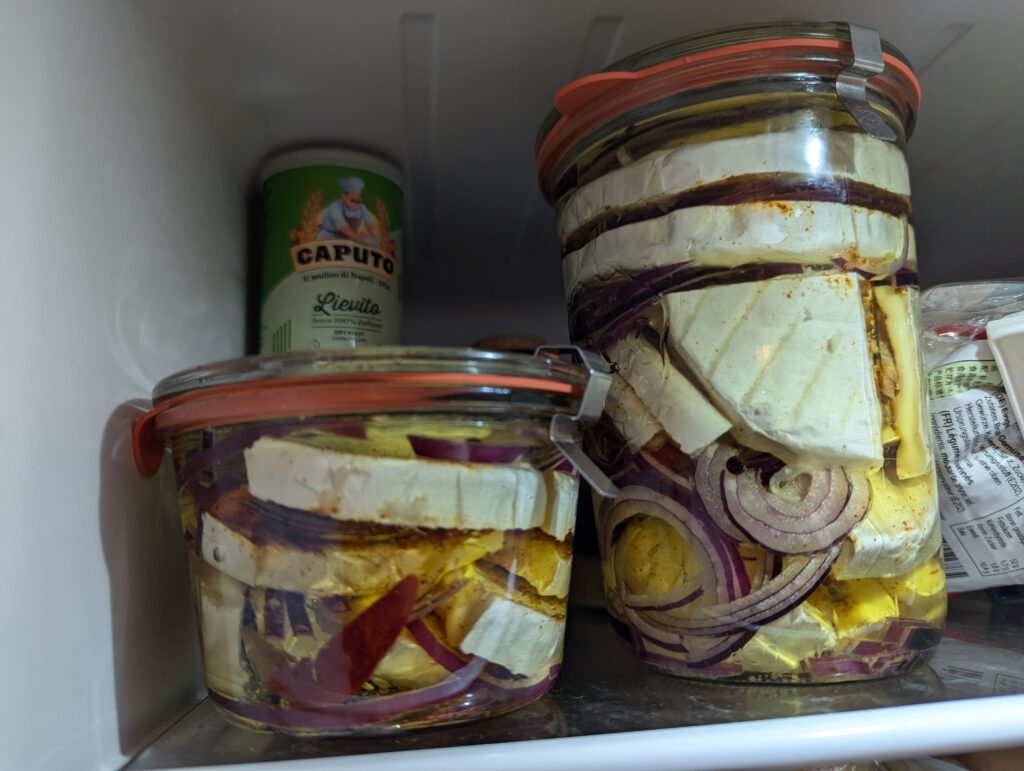
Obazda
This is an absolute classic in Bavaria. Originally invented to use up overripe camembert, it has developed into a standard Brotzeit dish in many beer gardens. It’s basically camembert mashed with butter and optionally other creamy cheeses, often with a shot of beer to thin it out a bit, and typically seasoned with paprika powder, finely chopped onions and caraway seeds.
The name isn’t exactly the most appetizing: it refers to how the ingredients have been turned into a mushy mass (“Batz”).
In the EU, Obzada resp. Obatzter (just a different spelling of the same term) is registered as a Protected Geographic Indication, meaning that commercially produced Obazda must be made in Bavaria. It also describes mandatory and optional ingredients, and minimum resp. maximum percentages of the individual ingredients. If you want to commercially produce and sell Obazda, this is the reference for you, but in a home-made version, no Obazda police will come and get you if you deviate a bit.
I do love my Obazda, but even though it seems like a very straightforward dish to make, there can be a massive difference in how intense it tastes. I’ve had fairly bland ones, but a beer garden known for its good beer (at least in my experience) usually also serves a very good Obazda.
If you want to make it yourself, there are some pretty good recipes available out there. According to legend, Obazda was invented in the 1920s by Katharina Eisenreich at the Weihenstephaner brewpub in Freising. Weihenstephaner brewery has a recipe for Obazda on their website which they claim is the original recipe. It’s described as being the right amount to serve 4 people, but in my experience, just making a quarter of the whole amount is perfectly sufficient for 2-3 people.
- 250 g Brie (or Camembert)
- 18 g butter
- 38 g cream cheese
- 30 g finely chopped onions
- 4 g paprika powder (I prefer the hot variety, plus a pinch of cayenne)
- a pinch of caraway seeds
- a pinch of salt and pepper each
- a bit of Weissbier
Mix cheese, butter, cream cheese, onions and beer into a coarse cream, ideally with a fork. Season with salt, pepper and caraway seeds. If necessary, add more beer to make it creamier. If you intend to put the Obazda in the fridge a few hours before serving, add even more beer because it will firm up. Serve with dark rye bread or soft pretzels.
In Franconia, essentially the same cheese concoction is known under a different name: “Gerupfter”, meaning “plucked one”, referring to how the cheese is getting ripped or “plucked” apart when mixing through the ingredients. Distinctly local variations of the recipe exist, and in my experience, the Franconian versions are always a bit more pungent. One such recipe is the one from Sternla, a historic pub/restaurant in Bamberg that restarted brewing beer only a few years ago. Besides camembert and cream cheese, it also uses Limburger, a particularly strong, smelly cheese that some describe as smelling like feet, but also cream to add creaminess. A shot of local Bamberg beer such a smoked beer mixed in adds to the local flair of the dish.
Here’s a video (in German) that shows the process of making the dish at Sternla:
I’ve made both the Weihenstephaner and the Sternla recipe, and both have their appeal. While the Weihenstephaner one may seem a bit blander compared to the Sternla Gerupfter, it can be made more intense by complementing the paprika powder with cayenne pepper. The Sternla recipe on the other hand gets its intensity mainly from the very pungent Limburger.
(not so fun fact: I like my cheese, but pure Limburger, even when served “with music”, i.e. marinated in vinegar and onions, is the only cheese that has ever given me an upset stomach)
Kochkäse
This one is especially close to my heart, because it’s the one I grew up with. In Upper Austria, Kochkäse (“Abkochter” in the local dialect, lit. “cooked-off one”) is really more associated with having it with Most, the local version of apple cider, or just generally with having bread, spreads and cold cuts as a meal.
In my family, Abkochter has a special place. It’s a cheese spread that my grandmother on my father’s side has always made whenever we visit her. It’s a slightly sticky cheese spread made from a ripened acid-set cheese, with a very distinct flavour that I wouldn’t exactly call pungent but definitely quite flavourful. If you haven’t tried it, it’s hard to describe.
My grandmother basically grew up with that cheese spread. She mentioned to me that when she was young, her mother would go to the local dairy and buy a special type of Topfen (a low fat acid-set cheese, similar to Quark in Germany) which she would then age at home in a warm environment (apparently a slightly smelly procedure). When the Topfen reached a glassy-looking consistency, she would then melt it down to a spread together with milk and butter, and season it with salt, pepper and caraway seeds (I suppose the irony of this cheese spread is that you take a low fat cheese and add back dairy fat).
Even as recently as 25-30 years ago, local supermarkets in my grandmother’s city sold that type of Topfen at the cheese counter, but according to my grandmother, she stopped aging it herself when my late grandfather started complaining about the intense smell in the kitchen. She then switched to Steirerkäs, a type of acid-set cheese that is basically like the aged version of Topfen. Other alternative cheeses you could use would be Olomoucké tvarůžky (aka Olomouc cheese, a Czech type of cheese relatively popular in Austria; my aunt on my mother’s side uses that when she makes that cheese spread) or Harzer Käse (which is what I use because it’s readily available in German supermarkets).
So here’s our family recipe, in my version:
- 200 g Harzer Käse
- 125 ml milk
- 80 g butter
Melt down cheese, milk and butter until all the cheese has melted. Despite what the name suggests, do not bring this to a boil, but only heat it as long as necessary to melt everything down. Season with salt, pepper and caraway seeds to taste. Optionally, you stir in an egg at the end, but I found that to not make a difference to either colour, flavour or texture, so I just leave it out. Let the cheese cool down before spreading it on dark rye bread.
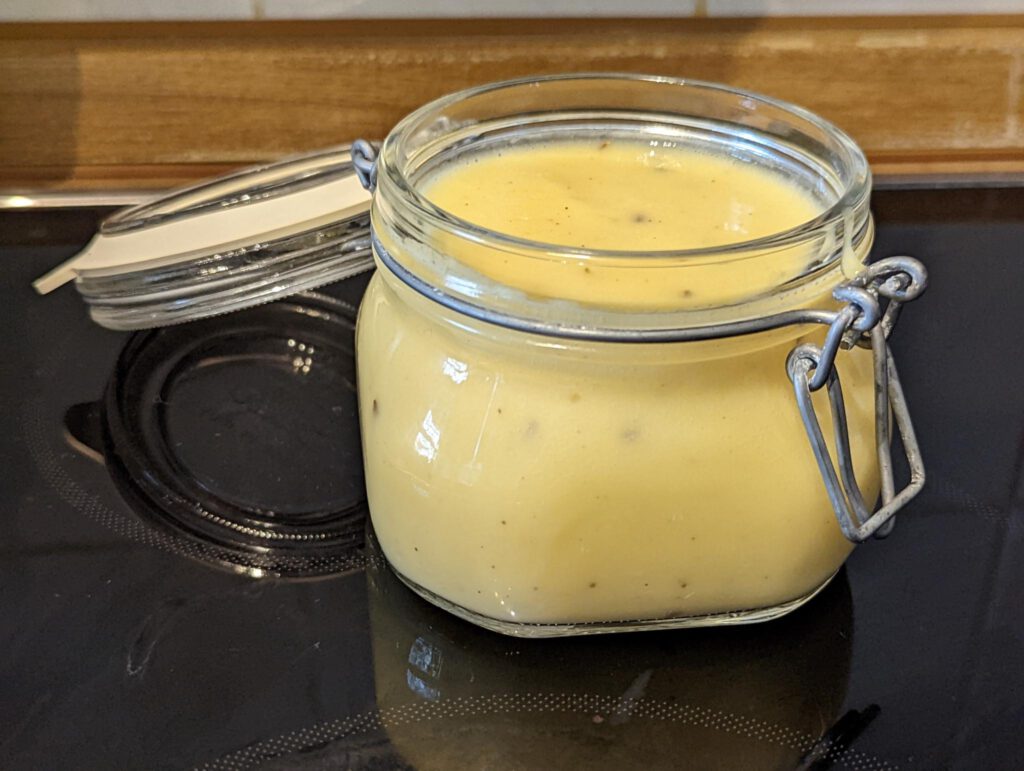
Besides it being a taste of my own childhood, what fascinates me about this cheese spread is how widespread (no pun intended) it is with nobody realising. The first time I came across it outside of Austria was in Upper Franconia of all places, at Knoblach brewery not far away from Bamberg. Even though their recipe tasted slightly differently from my family’s recipe, it was distinctly recognisable as Kochkäse. And they weren’t the only ones to sell it: Schuhmannskeller in Bischberg, just outside of Bamberg, also has it on their menu.
Then last year, I served the dish to an American friend of mine, and he was so amazed, he asked me for the recipe. He then made this recipe when his Polish mother visited him in Berlin. His mother remembered that her grandmother in Poland used to make a cheese like that, and it was the standard way of processing the milk that they had gotten from their own cows at the time.
That got us interested, and further research showed that the same or similar kind of cheese spread also exists in other places: in parts of Poland, it is known as Hauskyjza (which is not the name my friend’s mother knew it as); in Luxembourg, Kachkéis is the equivalent product, while in France, Cancoillotte is a very similar cheese spread that is popular in the regions of Franche-Comté and Lorraine. Kochkäse is also a thing in the German state of Hesse. The Hesse tourism website has a page about it, including a recipe that starts with aging Quark. I even found some evidence that a dish like that is also known in the Czech Republic. Meanwhile in Austria, there’s only one commercial producer of it, but it has struggled with insolvency in the past.
For a cheese preparation that can be found across such a wide area, from France and Luxembourg to parts of Germany and Austria all the way to Czechia and Poland, it is relatively unknown, even though it seems like a dish that only a few decades ago was probably a lot more common that it is nowadays. And most interestingly, several of these local traditions seem to think that they exist nowhere else. I’ve specifically heard this about the dish in Austria (“Kochkäse is a distinctly Upper Austrian thing and nowhere else to be found”), Luxembourg and Franconia. Is this a pan-european (processed) cheese tradition that has been mostly forgotten?
Summary
In any case, I think all three cheese dishes are absolutely delicious, fantastic snack foods in their own right, and perfectly paired with beer: nakládaný hermelín works especially well with Czech lagers, Obazda is wonderful beer garden food best enjoyed with a Helles, and Kochkäse is great with Franconian Kellerbier (or really any kind of beer, or just as part of Jause or Brotzeit). I’m a massive fan of each of them, hence why I call them Holy Trinity of cheesy beer snacks. If you like cheese as much as I do, you should definitely try them out. They’re all fairly easy to make at home. Even I can do it! (and I’m not a good cook)

